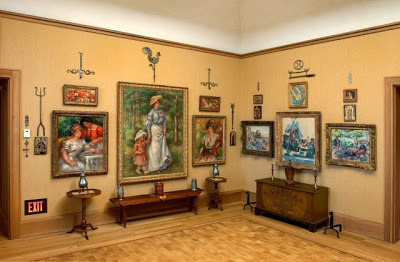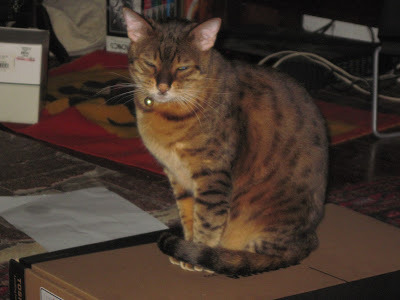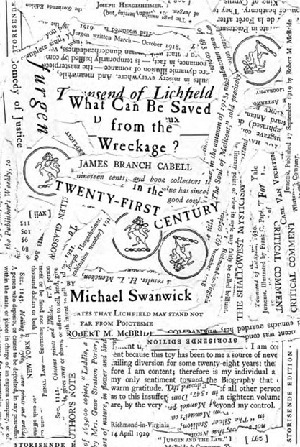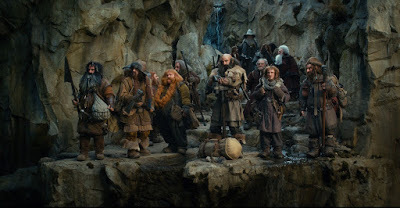Michael Swanwick's Blog, page 174
January 28, 2013
Dragonstairs Press Stirs and . . . Awakens?
.

Today's post is a little late because . . . Well, to explain, I have to go back a bit.
Those who pay attention to these things know that my wife, Marianne Porter, is the self-styled "nano-publisher" behind Dragonstairs Press, which has done a number of very handsome limited edition chapbooks of my work.
The chapbooks aren't all, however. One project that's been simmering away for over a year is Sam the Asteroid, a children's book based on a story I told Sean when he was very, very young.
This is not your usual children's book. In fact, Marianne is toying with using the blurb I wrote for it: Black Humor for Small Children!
Anyway, the art (by Adam Cusack) has been assembled, the publishing program bought, sworn at, and mastered, and the tech team -- that would be Sean -- has been recruited. So this morning Marianne said to me, "Today we [insert publishing babble here] -- so if you want to make any changes to the text, you'd better do it now."
So that's what I've been doing all day. Reworking and revising the text for Sam the Asteroid . I'll keep you posted on when it comes available. Or, you can watch the Dragonstairs website here. Pre-publication orders are not currently being accepted.
There's also another Dragonstairs project in the offing -- and it's a strange and wonderful one too. I'll keep you posted on that one as well.
*

Today's post is a little late because . . . Well, to explain, I have to go back a bit.
Those who pay attention to these things know that my wife, Marianne Porter, is the self-styled "nano-publisher" behind Dragonstairs Press, which has done a number of very handsome limited edition chapbooks of my work.
The chapbooks aren't all, however. One project that's been simmering away for over a year is Sam the Asteroid, a children's book based on a story I told Sean when he was very, very young.
This is not your usual children's book. In fact, Marianne is toying with using the blurb I wrote for it: Black Humor for Small Children!
Anyway, the art (by Adam Cusack) has been assembled, the publishing program bought, sworn at, and mastered, and the tech team -- that would be Sean -- has been recruited. So this morning Marianne said to me, "Today we [insert publishing babble here] -- so if you want to make any changes to the text, you'd better do it now."
So that's what I've been doing all day. Reworking and revising the text for Sam the Asteroid . I'll keep you posted on when it comes available. Or, you can watch the Dragonstairs website here. Pre-publication orders are not currently being accepted.
There's also another Dragonstairs project in the offing -- and it's a strange and wonderful one too. I'll keep you posted on that one as well.
*
Published on January 28, 2013 14:02
January 25, 2013
Revisitng the Re-Barnes
.

Yesterday, I finally visited the Barnes Foundation in its new home on the Parkway, and I am here to report that it's a very strange experience indeed to see rooms you've visited many times before whisked away and recreated in an entirely different building.
The new rooms have exactly the same proportions as the old ones, and the art is hung in them in exactly the same positions as the old ones. In most ways this is good. Albert C. Barnes, the man who assembled this astonishing collection at a time when the art establishment of Philadelphia wouldn't touch a Cezanne with a ten-foot pole, had an extremely good eye and strong theories about art. He created the original foundation as a teaching museum, and the paintings are placed so that various aspects of them can be compared and contrasted.
In two ways, this is not so good. First, because the rooms are relatively small, only a limited number of tickets are sold in any given time period, and since they almost always sell out, the rooms are always crowded. Also, because the rest of the walls were full, a few of the paintings are hung high over the doorways, where they're almost impossible to see. One Rousseau in particular makes me want to slap a ladder against the doorway and clamber up to see exactly what it's a painting of.
This came about because some years back the Barnes Foundation went bankrupt (this is a long story, involving race, rich people, parking, and above all, lawsuits -- lots and lots of lawsuits) and the only way that the Commonwealth of Pennsylvania would agree to fork over tens of millions of dollars to keep it afloat was in exchange for moving the collection to a new museum in Philadelphia.
Still, it's a wonderful collection, wherever one sees it. The Modigliani Redheaded Girl in an Evening Dress is as refreshing as a cold lemonade on a hot day. The Van Gogh of cottages under a pink sky is just plain amazing. The Courbet of a young woman peeling off her stockings preparatory to sex is quite simply pornographic -- and I mean that approvingly. The Miros are a joy to see. Seeing them again was like visiting old friends.
The exterior of the building is a little annoying when you're wandering about it on a cold winter day, looking for the entrance with very clues to help you find it. But the interior is comfortable and pleasantly workable. Lots of space has been added for people to rest in after all that staring at the art.
Because you have to order the tickets beforehand, the museum-goers are the most reverent batch you've ever seen in your life. I've been in cathedrals that drew less solemn crowds.

Above: I honestly couldn't tell you if this is the room from the old Barnes or the new one. They're virtually identical.
*

Yesterday, I finally visited the Barnes Foundation in its new home on the Parkway, and I am here to report that it's a very strange experience indeed to see rooms you've visited many times before whisked away and recreated in an entirely different building.
The new rooms have exactly the same proportions as the old ones, and the art is hung in them in exactly the same positions as the old ones. In most ways this is good. Albert C. Barnes, the man who assembled this astonishing collection at a time when the art establishment of Philadelphia wouldn't touch a Cezanne with a ten-foot pole, had an extremely good eye and strong theories about art. He created the original foundation as a teaching museum, and the paintings are placed so that various aspects of them can be compared and contrasted.
In two ways, this is not so good. First, because the rooms are relatively small, only a limited number of tickets are sold in any given time period, and since they almost always sell out, the rooms are always crowded. Also, because the rest of the walls were full, a few of the paintings are hung high over the doorways, where they're almost impossible to see. One Rousseau in particular makes me want to slap a ladder against the doorway and clamber up to see exactly what it's a painting of.
This came about because some years back the Barnes Foundation went bankrupt (this is a long story, involving race, rich people, parking, and above all, lawsuits -- lots and lots of lawsuits) and the only way that the Commonwealth of Pennsylvania would agree to fork over tens of millions of dollars to keep it afloat was in exchange for moving the collection to a new museum in Philadelphia.
Still, it's a wonderful collection, wherever one sees it. The Modigliani Redheaded Girl in an Evening Dress is as refreshing as a cold lemonade on a hot day. The Van Gogh of cottages under a pink sky is just plain amazing. The Courbet of a young woman peeling off her stockings preparatory to sex is quite simply pornographic -- and I mean that approvingly. The Miros are a joy to see. Seeing them again was like visiting old friends.
The exterior of the building is a little annoying when you're wandering about it on a cold winter day, looking for the entrance with very clues to help you find it. But the interior is comfortable and pleasantly workable. Lots of space has been added for people to rest in after all that staring at the art.
Because you have to order the tickets beforehand, the museum-goers are the most reverent batch you've ever seen in your life. I've been in cathedrals that drew less solemn crowds.

Above: I honestly couldn't tell you if this is the room from the old Barnes or the new one. They're virtually identical.
*
Published on January 25, 2013 13:36
January 23, 2013
Okay, I Admit It, I Have Nothing to Say Today....
.

Okay, I admit it. I have nothing to say today.
So here's a photo of Miss Helen Hope Mrrrlees rejecting your speciesist objectification of feline beauty.
I'm sorry to have to be the one to convey her opinion of you to you.
Incidentally, this is as closed as I've ever seen Miss Hope's eyes. She sleeps with them open.
*

Okay, I admit it. I have nothing to say today.
So here's a photo of Miss Helen Hope Mrrrlees rejecting your speciesist objectification of feline beauty.
I'm sorry to have to be the one to convey her opinion of you to you.
Incidentally, this is as closed as I've ever seen Miss Hope's eyes. She sleeps with them open.
*
Published on January 23, 2013 19:10
January 21, 2013
The Truth About Science Fiction Writers
.

Years ago, at a convention, I was spinning out one of my favorite fantasies about how pleasant it would be if there were such a thing as a mainstream literary conventions: Big-name guests of honor, panels on the New Realistic, and so on. Gordon Van Gelder listened patiently, and then said, "Nobody could afford it."
"Eh?" I said.
"Mainstream writers charge for public appearances. It's a major part of how they make a living."
There then ensued a multi-person conversation on the economics of mainstream author appearances which I'll spare you because I remember none of the specifics, but which would have made a good panel, had it been premeditated.
Science fiction conventions are an accident of history. Hugo Gernsback put letters columns in his magazines to boost circulation, and included the addresses in them. Scientifiction enthusiasts started writing letters to each other, and thus fandom was born. Fans wanted to get together, and so they created conventions. Many of these fans were also writers and so editors like John W. Campbell were available for the conventions. Science fiction writers got no respect from the literary world, so they were pleased to show up and be lionized. Add time, shake, and you have what we have today.
Similarly, due to this accident of history, science fiction writers have a long history of helping other writers learn how to write and how to sell. This is not how it works in the larger literary world, alas. As a group, genre writers are nicer to each other than mainstream writers are.
This all comes to mind because at the Pen & Pencil club the other day, Gardner Dozois said, "Do you know how much money George R. R. Martin made last year? I wouldn't mention it, except that I saw it in a newspaper, so it's a matter of public record." Then he mentioned a number that was, let's say, remarkably large.
We were sitting at a table of writers and journalists and one nano-publisher, and after we'd discussed this matter for a bit, Tom Purdom remarked, "Do you see how remarkable this is? We have a group of writers discussing the financial good fortune of a friend -- and nobody's said a bad word about him!"
Which made us all feel pretty good about the cohort we belong to. Somebody raised a glass and proposed a toast: "To George R. R. Martin!"
"To George R. R. Martin!" everybody cried, and drank to his health and continued prosperity.
It was a good moment, and I for one was grateful to George for it.
*

Years ago, at a convention, I was spinning out one of my favorite fantasies about how pleasant it would be if there were such a thing as a mainstream literary conventions: Big-name guests of honor, panels on the New Realistic, and so on. Gordon Van Gelder listened patiently, and then said, "Nobody could afford it."
"Eh?" I said.
"Mainstream writers charge for public appearances. It's a major part of how they make a living."
There then ensued a multi-person conversation on the economics of mainstream author appearances which I'll spare you because I remember none of the specifics, but which would have made a good panel, had it been premeditated.
Science fiction conventions are an accident of history. Hugo Gernsback put letters columns in his magazines to boost circulation, and included the addresses in them. Scientifiction enthusiasts started writing letters to each other, and thus fandom was born. Fans wanted to get together, and so they created conventions. Many of these fans were also writers and so editors like John W. Campbell were available for the conventions. Science fiction writers got no respect from the literary world, so they were pleased to show up and be lionized. Add time, shake, and you have what we have today.
Similarly, due to this accident of history, science fiction writers have a long history of helping other writers learn how to write and how to sell. This is not how it works in the larger literary world, alas. As a group, genre writers are nicer to each other than mainstream writers are.
This all comes to mind because at the Pen & Pencil club the other day, Gardner Dozois said, "Do you know how much money George R. R. Martin made last year? I wouldn't mention it, except that I saw it in a newspaper, so it's a matter of public record." Then he mentioned a number that was, let's say, remarkably large.
We were sitting at a table of writers and journalists and one nano-publisher, and after we'd discussed this matter for a bit, Tom Purdom remarked, "Do you see how remarkable this is? We have a group of writers discussing the financial good fortune of a friend -- and nobody's said a bad word about him!"
Which made us all feel pretty good about the cohort we belong to. Somebody raised a glass and proposed a toast: "To George R. R. Martin!"
"To George R. R. Martin!" everybody cried, and drank to his health and continued prosperity.
It was a good moment, and I for one was grateful to George for it.
*
Published on January 21, 2013 00:37
January 18, 2013
Bright Lights, City Mountains
.

I am currently working on a chapter of Hunting the Phoenix , my new Darger & Surplus novel, set in Guilin.
Guilin is one of the most beautiful places I've never been to. I'd arranged to go there (among other places) earlier this year, but a badly-timed cold (the airport in Beijing has thermometer gates to catch anyone running a fever so they can be placed in quarantine) put the kibosh to that plan.
Nevertheless, Marianne went and afterward told me about it. I've been dreaming about it ever since.
Guilin is a city of roughly one million people, punctuated by karst mountains. Wooded mountains, right in the middle of the city! Even better, these are those beautiful mountains that Chinese artists have been painting since forever -- the ones that look too good to be true. It turns out that in the morning when the mists gather about their feet, they're even lovelier than you refused to believe they could be.
All of the mountains, and there are many of them, are riddled with caves, both natural and man-made. They're all hollow!
On the waterfront, at night, all the buildings are lit up with colored LEDs.
Oh, man. I have got to return to China.

*

I am currently working on a chapter of Hunting the Phoenix , my new Darger & Surplus novel, set in Guilin.
Guilin is one of the most beautiful places I've never been to. I'd arranged to go there (among other places) earlier this year, but a badly-timed cold (the airport in Beijing has thermometer gates to catch anyone running a fever so they can be placed in quarantine) put the kibosh to that plan.
Nevertheless, Marianne went and afterward told me about it. I've been dreaming about it ever since.
Guilin is a city of roughly one million people, punctuated by karst mountains. Wooded mountains, right in the middle of the city! Even better, these are those beautiful mountains that Chinese artists have been painting since forever -- the ones that look too good to be true. It turns out that in the morning when the mists gather about their feet, they're even lovelier than you refused to believe they could be.
All of the mountains, and there are many of them, are riddled with caves, both natural and man-made. They're all hollow!
On the waterfront, at night, all the buildings are lit up with colored LEDs.
Oh, man. I have got to return to China.

*
Published on January 18, 2013 12:55
January 16, 2013
"Ahem"
.

My Monday post about my nonfiction elicited an email from my friend and occasional publisher, Henry Wessels, with the heading of "Ahem." He wished it pointed out that What Can Be Saved From The Wreckage?, my survey of James Branch Cabell's life and works, can still be bought from the publisher at its original (and quite reasonable) price.
Point well taken. For ordering info, click here.
Cabell's was a maddeningly hard to judge individual. He married an older woman for her money and said so in his autobiographical writings. Yet he not only refused to have his Down's Syndrome son institutionalized at a time when that was the expected thing, he included the boy in his social life. He had a wicked sense of humor, which he frequently chose not to share with his readers. He was a curmudgeon who could charm the pants off an interviewer, even in his curdled old age. Every time you think you've got a handle on him, he does something to confound you.
Which is, I believe, as he intended.
As for my book . . . It's primary virtue, I believe, is for those who want to go voyaging in his fiction but do not know where in his approximately fifty books to begin. I may well be wrong in my judgment of some of his books ( Neil Gaiman, for one, wishes I had been more bullish on a couple), but I am not wrong in my ranking. Start with those I praise highest, leave those I liked least for least, and when you've decided your appetite has been sated, you can leave off with a clean conscience.
.

My Monday post about my nonfiction elicited an email from my friend and occasional publisher, Henry Wessels, with the heading of "Ahem." He wished it pointed out that What Can Be Saved From The Wreckage?, my survey of James Branch Cabell's life and works, can still be bought from the publisher at its original (and quite reasonable) price.
Point well taken. For ordering info, click here.
Cabell's was a maddeningly hard to judge individual. He married an older woman for her money and said so in his autobiographical writings. Yet he not only refused to have his Down's Syndrome son institutionalized at a time when that was the expected thing, he included the boy in his social life. He had a wicked sense of humor, which he frequently chose not to share with his readers. He was a curmudgeon who could charm the pants off an interviewer, even in his curdled old age. Every time you think you've got a handle on him, he does something to confound you.
Which is, I believe, as he intended.
As for my book . . . It's primary virtue, I believe, is for those who want to go voyaging in his fiction but do not know where in his approximately fifty books to begin. I may well be wrong in my judgment of some of his books ( Neil Gaiman, for one, wishes I had been more bullish on a couple), but I am not wrong in my ranking. Start with those I praise highest, leave those I liked least for least, and when you've decided your appetite has been sated, you can leave off with a clean conscience.
.
Published on January 16, 2013 19:22
January 14, 2013
Tawny Petticoats
.Pleasant news, if you happen to be me! My Darger & Surplus story, "Tawny Petticoats" has been accepted for Gardner Dozois' and George R. R. Martin's
Rogues
anthology.
Of the story itself, I shall say only that it takes place in New Orleans and that it involves zombies. Not George Romero brain-eating zombies, I hasten to add. Old School zombies. Of its eponymous heroine, I shall only remark that she makes a great addition to the team.
And her name? It comes from Mother Goose. Before you read it, though, you should be aware that at that time the rhyme was written, "lusty" meant healthy and hence physically attractive. Nothing bad.
Here it is:
As I went by a dyer's door,
I met a lusty tawnymoor.
Tawny hands and tawny face,
Tawny petticoats,
Silver lace.
I isn't that lovely? Isn't that Romantic? Can't you just see the young lady blush when the poem's narrator pays her his compliments?
*
Of the story itself, I shall say only that it takes place in New Orleans and that it involves zombies. Not George Romero brain-eating zombies, I hasten to add. Old School zombies. Of its eponymous heroine, I shall only remark that she makes a great addition to the team.
And her name? It comes from Mother Goose. Before you read it, though, you should be aware that at that time the rhyme was written, "lusty" meant healthy and hence physically attractive. Nothing bad.
Here it is:
As I went by a dyer's door,
I met a lusty tawnymoor.
Tawny hands and tawny face,
Tawny petticoats,
Silver lace.
I isn't that lovely? Isn't that Romantic? Can't you just see the young lady blush when the poem's narrator pays her his compliments?
*
Published on January 14, 2013 18:03
Nonfiction and Me
.

I spent the day roaming about New Jersey in search of a crested caracara (pictured above) that had wandered far, far from its usual territory -- Texas and Mexico, mostly, but there are some as close as southern Florida. Alas, Marianne and I did not see it, though we did talk to a man who had, only a few minutes before.
That, anyway, is why this blog post is almost (but not quite) late. But it's still today, so I'll share with a letter I received over the weekend. The writer's name has been removed because there wasn't the time to ask his permission to use it:
The short answer is that while there's no collection of my non-fiction in the works, I have plans on the back burner to publish an e-book of Hope-in-the-Mist with a couple of short related non-fiction pieces, just to make it available to scholars and other interested individuals. Since there's so little material available on Hope Mirrlees, anybody who wants to write about her pretty much has to read my book, which is now perilously close to being unobtainable. So I feel an obligation to do something about.
So why haven't I done that already? Well...
Years ago, while the project was cooking, I told critic John Clute that I was writing a book on Hope Mirrlees. He looked alarmed and said, "You do realize that there's no money in it?"
"I do, and I'm researching it in my spare time, as a hobby."
"Good, good, good!" John said, visibly relieved. Obviously the man had some experience with how naive commercial writers could be about academic publishing.
Which is why I haven't done more with my non-fiction. Because it's a hobby. Most of my time goes to my fiction, which pays me pretty well. A lot of my free time goes to writing non-fiction, which because I only write about things I feel passionately about is satisfying to the soul. And the rest...
Well, much as I'd like to have a collection or three of my non-fiction, I don't currently have the time to go looking for a publisher. Maybe after I've got the next two novels finished things will open up more.
And that's my unsatisfying answer. I apologize for it not being more like what you and I would prefer. I write for the love of it and the work which I write for love which brings in money has people who will do all the grunt work of selling it and publishing it. That which brings in little money simply has to wait.
Someday, though. When I can find the time.
*

I spent the day roaming about New Jersey in search of a crested caracara (pictured above) that had wandered far, far from its usual territory -- Texas and Mexico, mostly, but there are some as close as southern Florida. Alas, Marianne and I did not see it, though we did talk to a man who had, only a few minutes before.
That, anyway, is why this blog post is almost (but not quite) late. But it's still today, so I'll share with a letter I received over the weekend. The writer's name has been removed because there wasn't the time to ask his permission to use it:
I'm a long time fan. I actually briefly met you at the SFWA event in NY earlier in the fall. I had a quick question. Are there any plans afoot to reprint "Hope-in-the-Mist" and "What Can Be Saved from the Wreckage?" Maybe even in one volume? If not, I think your non-fiction is due for a collection. I've had my eyes peeled for those for a while and really am desperate to read them. Anyway, thanks for what you do.
The short answer is that while there's no collection of my non-fiction in the works, I have plans on the back burner to publish an e-book of Hope-in-the-Mist with a couple of short related non-fiction pieces, just to make it available to scholars and other interested individuals. Since there's so little material available on Hope Mirrlees, anybody who wants to write about her pretty much has to read my book, which is now perilously close to being unobtainable. So I feel an obligation to do something about.
So why haven't I done that already? Well...
Years ago, while the project was cooking, I told critic John Clute that I was writing a book on Hope Mirrlees. He looked alarmed and said, "You do realize that there's no money in it?"
"I do, and I'm researching it in my spare time, as a hobby."
"Good, good, good!" John said, visibly relieved. Obviously the man had some experience with how naive commercial writers could be about academic publishing.
Which is why I haven't done more with my non-fiction. Because it's a hobby. Most of my time goes to my fiction, which pays me pretty well. A lot of my free time goes to writing non-fiction, which because I only write about things I feel passionately about is satisfying to the soul. And the rest...
Well, much as I'd like to have a collection or three of my non-fiction, I don't currently have the time to go looking for a publisher. Maybe after I've got the next two novels finished things will open up more.
And that's my unsatisfying answer. I apologize for it not being more like what you and I would prefer. I write for the love of it and the work which I write for love which brings in money has people who will do all the grunt work of selling it and publishing it. That which brings in little money simply has to wait.
Someday, though. When I can find the time.
*
Published on January 14, 2013 16:08
January 11, 2013
Free Me!
.

Well, technically speaking, a free story by me. In a free e-book anthology from Tor.com. With a refreshingly honest title. Every year, in his introduction to his Big Fat Best of the Year anthology, Gardner Dozois comments that, given the lack of any possible means of objectively defining "best" stories, the anthology really ought to be Stories That Gardner Dozois Thought Were Cool This Yea r. Editors Gorinsky, Nielsen Hayden, and Hartwell, got around this ethical dilemma by calling their volume, Some of the Best From Tor.Com : 2012 Edition . Implying, I believe, that they consider all the stories they publish to be top-notch. Which is true. They pay top rates and they get first look at a lot of cool short fiction.
Anyway, it's a cool anthology, it has my own "The Mongolian Wizard" in it, and it's absolutely free. If you read books in e-form, there's no reason not to get it.
The announcement and links for downloads are here. There's also a 2011 version, which has my own "The Dala Horse," in it (along with other good stuff), also available free. When you download this year's collection, you should poke around and download last year's as well.
And I have advice for those who have just published their first story . . .
Updating my records for the above publication put me in mind of some advice I've been meaning to pass along. Here's something that every writer should do upon publication of your first story, even though it's going to make you feel foolish: Start a bibliography.
This should be the very third thing you do (after breaking open the champagne and the hot sex which you may or may not regret the next day) after your story comes out. Look up the proper formatting, write down all the info, and then save the sheet of paper and the e-file in places where you can easily find them.
As is only natural, that first story is going to going to look mighty small and lonely on that great big sheet of paper or screen. You're going to be tempted to delete the file, trashcan the paper, and put the chore off until you've got enough publications to fill an entire page.
Don't do it!
By the time you've had enough stories published for your bibliography to look good, that information is going to be difficult to assemble, and you'll never be entirely sure you haven't missed an item or ten. There'll be a reprint in Portugar, a posting on the Web, a pirated copy in a former Soviet Republic, something which doesn't get included. Which I guarantee will bother you.
Also, it'll be a great incentive to keep you writing when you feel like goofing off. One more story and the bibliography will look less silly . . . Another two and my career will begin to look promising . . . Four more and it goes to a second page!
These are little things, admittedly. But that's what a writer's life is made up of: small gestures.
*

Well, technically speaking, a free story by me. In a free e-book anthology from Tor.com. With a refreshingly honest title. Every year, in his introduction to his Big Fat Best of the Year anthology, Gardner Dozois comments that, given the lack of any possible means of objectively defining "best" stories, the anthology really ought to be Stories That Gardner Dozois Thought Were Cool This Yea r. Editors Gorinsky, Nielsen Hayden, and Hartwell, got around this ethical dilemma by calling their volume, Some of the Best From Tor.Com : 2012 Edition . Implying, I believe, that they consider all the stories they publish to be top-notch. Which is true. They pay top rates and they get first look at a lot of cool short fiction.
Anyway, it's a cool anthology, it has my own "The Mongolian Wizard" in it, and it's absolutely free. If you read books in e-form, there's no reason not to get it.
The announcement and links for downloads are here. There's also a 2011 version, which has my own "The Dala Horse," in it (along with other good stuff), also available free. When you download this year's collection, you should poke around and download last year's as well.
And I have advice for those who have just published their first story . . .
Updating my records for the above publication put me in mind of some advice I've been meaning to pass along. Here's something that every writer should do upon publication of your first story, even though it's going to make you feel foolish: Start a bibliography.
This should be the very third thing you do (after breaking open the champagne and the hot sex which you may or may not regret the next day) after your story comes out. Look up the proper formatting, write down all the info, and then save the sheet of paper and the e-file in places where you can easily find them.
As is only natural, that first story is going to going to look mighty small and lonely on that great big sheet of paper or screen. You're going to be tempted to delete the file, trashcan the paper, and put the chore off until you've got enough publications to fill an entire page.
Don't do it!
By the time you've had enough stories published for your bibliography to look good, that information is going to be difficult to assemble, and you'll never be entirely sure you haven't missed an item or ten. There'll be a reprint in Portugar, a posting on the Web, a pirated copy in a former Soviet Republic, something which doesn't get included. Which I guarantee will bother you.
Also, it'll be a great incentive to keep you writing when you feel like goofing off. One more story and the bibliography will look less silly . . . Another two and my career will begin to look promising . . . Four more and it goes to a second page!
These are little things, admittedly. But that's what a writer's life is made up of: small gestures.
*
Published on January 11, 2013 09:06
January 9, 2013
One Rule To Judge Them All And In The Darkness Bind Them
.

So . . . You saw the movie version of The Hobbit and it was like the parson's egg -- parts of it were excellent. But then the gang went on Mr. Troll's Wild Ride, and you thought: Oh dear God! Now you can't decide how to judge the movie. Given its virtues, can you really, with a clean conscience, declare that it's a bad movie?
Unca Mike is here to help.
Long, long ago, I formulated a rule by which one can dismiss most bad cartoons without having to endure them all the way to the end. If the assembled good guys suddenly find themselves all in a clump, flying through the air screaming . . . that means the cartoon sucks. It's possible that three-year-olds think this is witty. I wouldn't know because when Sean was that age, we told him that that there were no TV shows on Saturday mornings. But for ages five and above, it's witless.
From Dennis the Menace and his friends flying through the air in a Radio Flyer screaming to Winnie the Pooh and his friends clinging to each other while flying through the air screaming (and surely there are Disney executives who will burn in Hell for that), it's an infallible rule of thumb: anything containing that scene is a sucky cartoon. Doubly so if they also abruptly fall screaming down a long slide that suddenly opens up beneath them.
By this infallible rule, what you saw was not a bad movie -- it was a sucky cartoon.
I'm glad I could clear that up for you.
*

So . . . You saw the movie version of The Hobbit and it was like the parson's egg -- parts of it were excellent. But then the gang went on Mr. Troll's Wild Ride, and you thought: Oh dear God! Now you can't decide how to judge the movie. Given its virtues, can you really, with a clean conscience, declare that it's a bad movie?
Unca Mike is here to help.
Long, long ago, I formulated a rule by which one can dismiss most bad cartoons without having to endure them all the way to the end. If the assembled good guys suddenly find themselves all in a clump, flying through the air screaming . . . that means the cartoon sucks. It's possible that three-year-olds think this is witty. I wouldn't know because when Sean was that age, we told him that that there were no TV shows on Saturday mornings. But for ages five and above, it's witless.
From Dennis the Menace and his friends flying through the air in a Radio Flyer screaming to Winnie the Pooh and his friends clinging to each other while flying through the air screaming (and surely there are Disney executives who will burn in Hell for that), it's an infallible rule of thumb: anything containing that scene is a sucky cartoon. Doubly so if they also abruptly fall screaming down a long slide that suddenly opens up beneath them.
By this infallible rule, what you saw was not a bad movie -- it was a sucky cartoon.
I'm glad I could clear that up for you.
*
Published on January 09, 2013 07:07
Michael Swanwick's Blog
- Michael Swanwick's profile
- 546 followers
Michael Swanwick isn't a Goodreads Author
(yet),
but they
do have a blog,
so here are some recent posts imported from
their feed.



